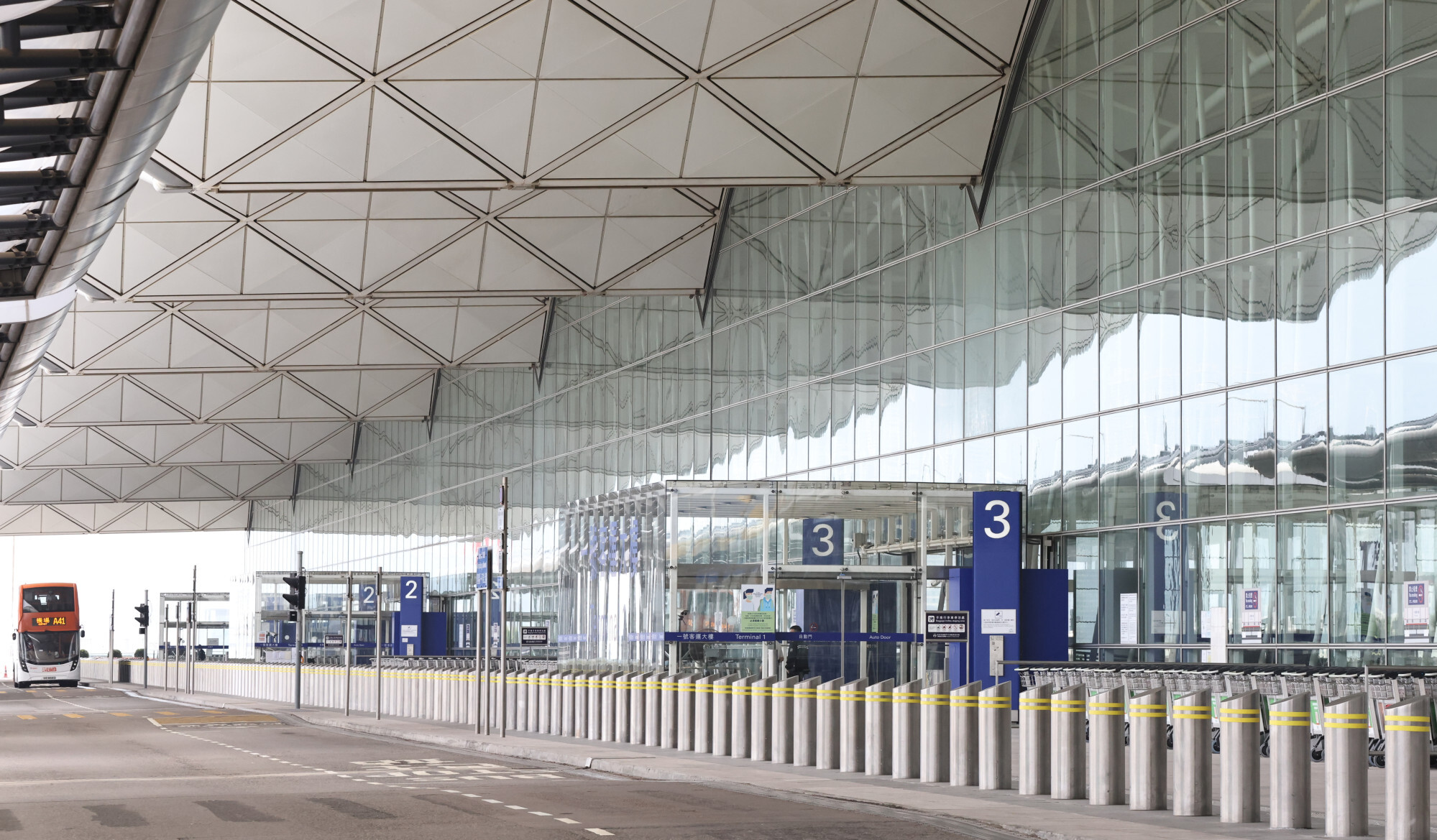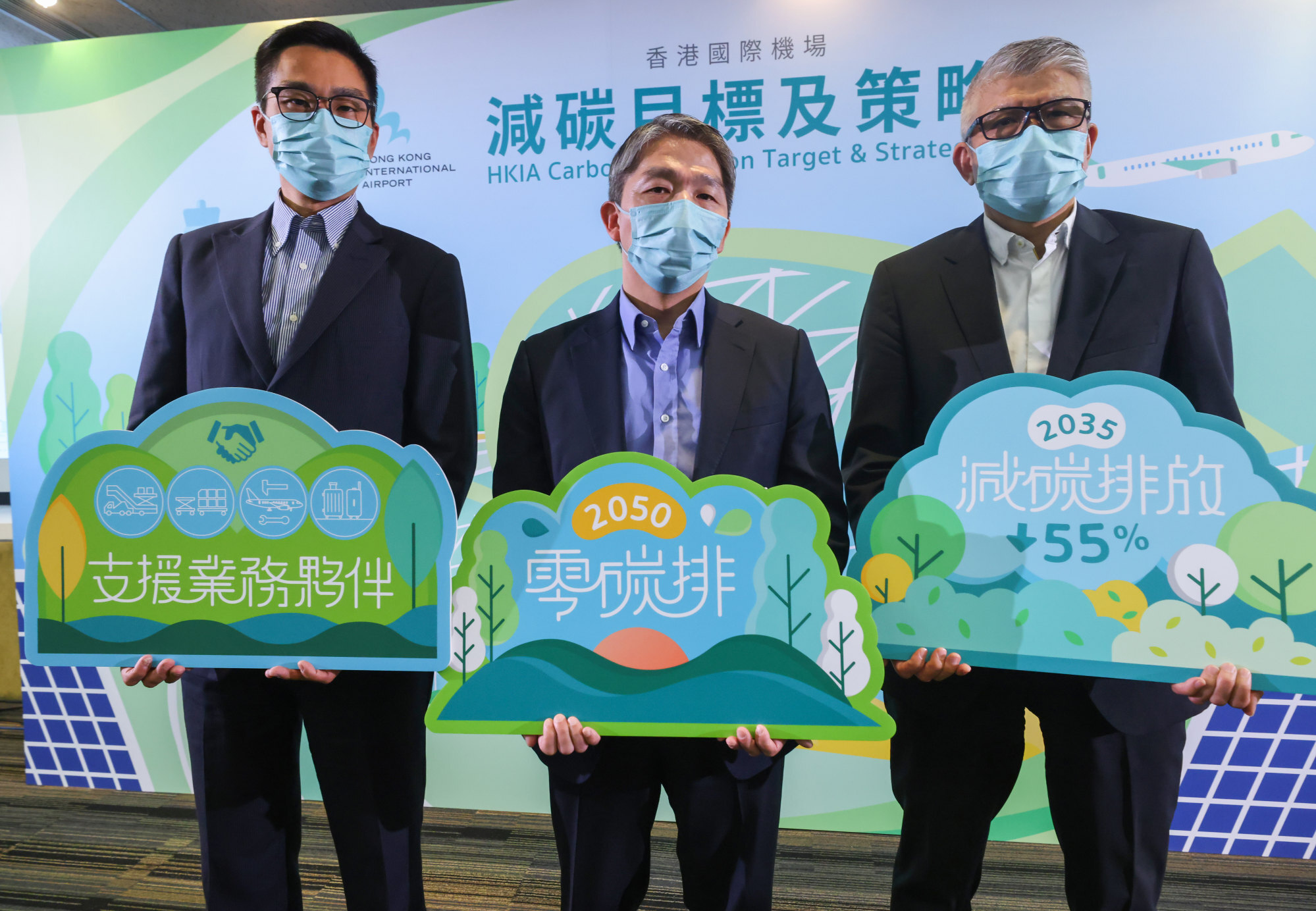
Can Hong Kong’s airport achieve net zero carbon emissions by 2050? Switch to electric vehicles a focus in blueprint
- Air hub reached 2035 midpoint target of 55 per cent slash in emissions last year due to pandemic
- Purchase of greener equipment and covering investment costs by renting out to service firms also part of strategy
Hong Kong International Airport has pledged to attain net zero carbon emissions by 2050, with the switch to electric vehicles as a key solution in its blueprint.
The airport aims to slash its absolute carbon emissions by 55 per cent by 2035, subsequently reaching the net zero target in 15 years. The mark, which comes from a 2018 baseline, is similar to the standard set by London’s Heathrow Airport.
Peter Lee, general manager of sustainability at Hong Kong’s airport, said: “Our target is net zero instead of neutrality so it’s quite clear to us that we will try not to pursue any offset at all, in particular for the midpoint of 2035.
“In terms of the 2050 ultimate target, I think we need to wait and see what technology is coming,” Lee added.
Chinese airlines challenge 2050 industry target for net zero CO2 emissions
The 2035 midpoint target includes using more renewable diesel, battery-based vehicle solutions.
The airport reached the 2035 baseline last year due to the near-inactivity of passenger flights brought on by the coronavirus pandemic.
Twenty-nine business partners – including companies ranging from Cathay Pacific to Hong Kong Air Cargo Terminals Limited, which account for 90 per cent of the air hub’s carbon footprint – have also jointly committed to net zero targets, according to airport management.

Hong Kong has made strides in recent years to cut back on vehicle emissions through the use of driverless technology for baggage or air cargo services, or incorporating major infrastructure to remove vehicles outright.
By the end of 2030, the airport’s fleet of cars, buses and vans will be fully electric. Currently a fifth of the fleet is electric. The number of airfield charging points will also be more than doubled from 270 to 580 next year.

Another area of focus is on electric-powered ground service equipment such as tow trucks, as well as container-loading and passenger-steps vehicles. Some 270 electric-based service vehicles have already arrived, and the fleet size will increase to 580 next year.
The airport bought existing fossil fuel-based equipment last year from struggling aviation services firms at the start of the pandemic, and has taken on the cost of phasing out mostly diesel-powered vehicles.
Hong Kong airport cuts energy usage with new air-conditioning system
It has also accelerated the purchase of greener equipment, in a move the Airport Authority said was a first of its kind for an aviation hub. Costs will be covered by renting out the resources to service firms and savings from not requiring fuel.
Rental income will be generated from ground-handling companies in exchange for purchasing the equipment upfront, therefore avoiding passing costs to passengers.
Lee described the arrangement as “a win-win situation”.
He added: “[The ground-handling companies] reduce their cost, and we get a return for the investment. It’s the same for apron vehicles because [saving on fuel reduces] a lot of costs.”
Aviation group ‘rethinking’ emissions pledge, pushing for greener goals: outgoing chief
The conversion to electric support equipment so far has cost the airport HK$200 million, with another HK$400 million allocated to complete the transition for the entire passenger terminal.
The airport declined to give an overall figure of how much its transition to net zero carbon emissions would cost due to the investment taking place over a multi-year, continuous basis.
Extra efforts include installing LED lighting, and using smart technology to better control how much energy is needed to power systems such as air conditioning.
Much of the airline industry and the supply chain has pledged to reach net zero carbon emissions by 2050. Many countries have also sought to achieve this mark, though China is aiming for the goal a decade later, as it expects its emissions to peak at a later stage.

